Forget takeaways, nothing could beat this meltingly tender Spicy Beef Rendang! Each piece is caramelized on the outside, tender on the inside, and permeated with layer upon layer of creamy, spicy flavours.I’ve been making this recipe for many years now and it’s a winner every time. The long slow cooking, and the changes that occur during that cooking process truly makes this dish feel like it’s been cooked with care and devotion.
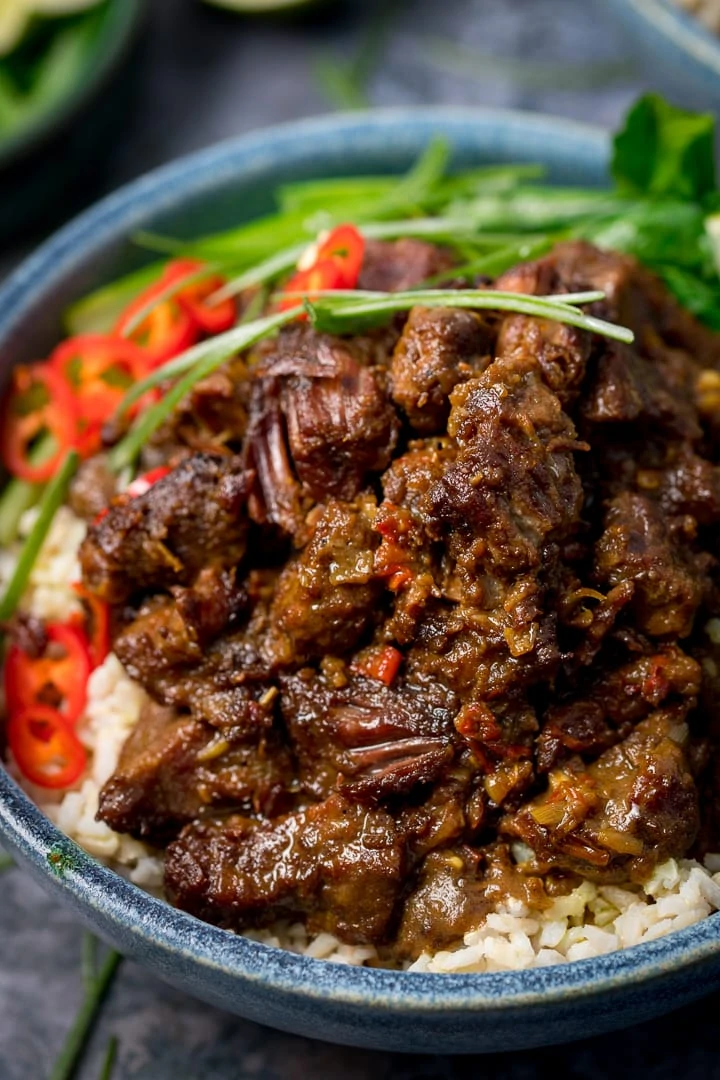
This is a slow-cooked dish, that requires the occasional bit of attention during its 4 hours in the oven. It’s one that’s worth saving for the weekend to ensure a result that is totally worth the wait.
What is Rendang?
Rendang originates from Indonesia, and is now a popular dish all over the world, due to it’s amazing and complex flavours. There are many different recipes out there, but most (including me!) agree that it’s a slow-cooked dry curry, made with coconut milk, spices and sugar.
The uniqueness of rendang, compared to any other slow-cooked beef curry, is that during the cooking process, the coconut milk reduces, and the oil separates from the coconut milk. This means that the beef is initially slow-cooked to tenderness in that creamy-spicy sauce, and then as the oil separates, it fries the beef, giving it a beautiful, caramelized exterior.
What do we need to make it?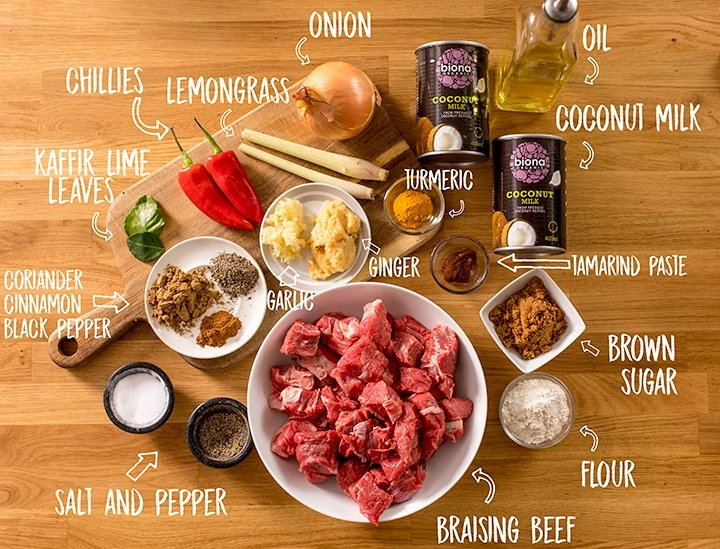
Best cut of beef to use:
Chuck steak (also known as braising steak) – comes from the forequarter of the cow. This consists of parts of the neck, shoulder blade, and upper arm. It’s a tough but very flavorful cut of meat that needs long slow cooking. This makes it perfect for beef rendang. Cut the beef into large (3cm-4cm) chunks.
How do we make it?
- Dust chunks of beef with flour, salt and pepper, then seal the beef in hot oil in a large cast-iron casserole pan. Transfer the beef to a bowl.
- Soften a chopped onion in the same pan with a little oil (scrape up any crispy bits as you go), then add garlic, ginger and turmeric, lemongrass, chillies, tamarind paste, ground coriander, pepper, cinnamon, lime leaves, sugar and salt.
- After cooking for a minute or so, add in coconut milk. Stir and bring to the boil, then add the beef back in.
-
- Place a lid on the pan and place in the oven at 150C/300F for 90 minutes.
- After 90 minutes, stir, then continue to cook in the oven, uncovered for another 2-2.5 hours, stirring very gently every half an hour.
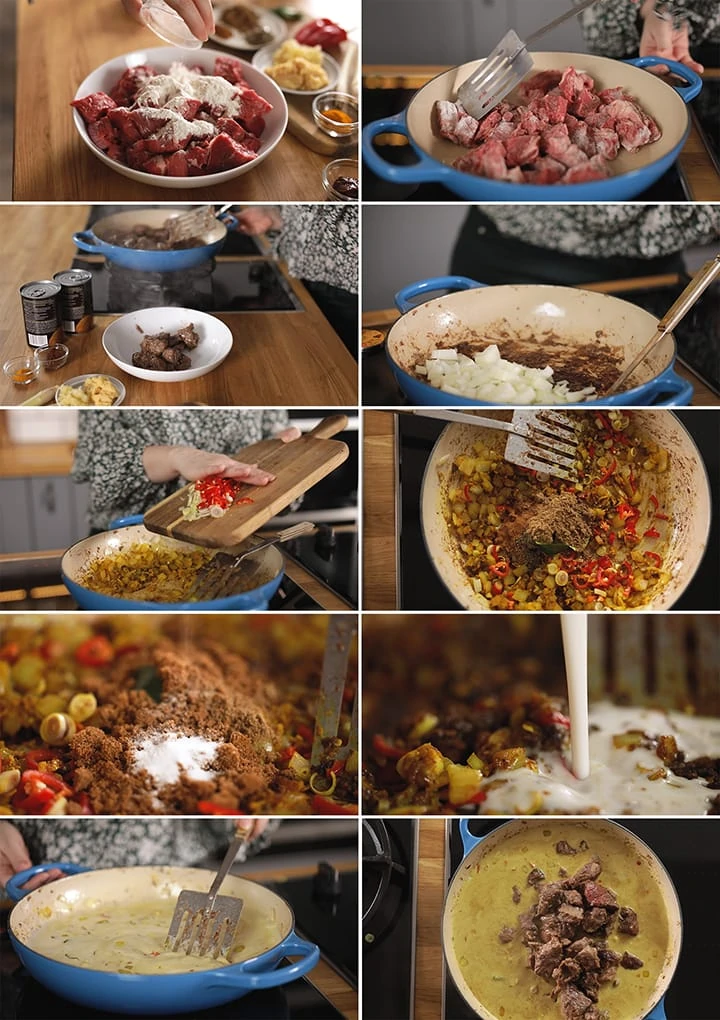 When you put the rendang in the oven, you’ll wonder how it’s going to end up being a dry-ish curry. The recipe starts off with a lot of liquid from the coconut milk. However, during the cooking process, that coconut milk reduces right down.
When you put the rendang in the oven, you’ll wonder how it’s going to end up being a dry-ish curry. The recipe starts off with a lot of liquid from the coconut milk. However, during the cooking process, that coconut milk reduces right down.
After about 3 hours, the oil separates from the rest of the sauce (you’ll be amazed at how much of it there actually is).As you take it out of the oven for an occasional stir, you’ll probably wonder if it’s all going to go horribly wrong. Trust me, it’s supposed to look like that.
Here’s how mine looks during the cooking process:
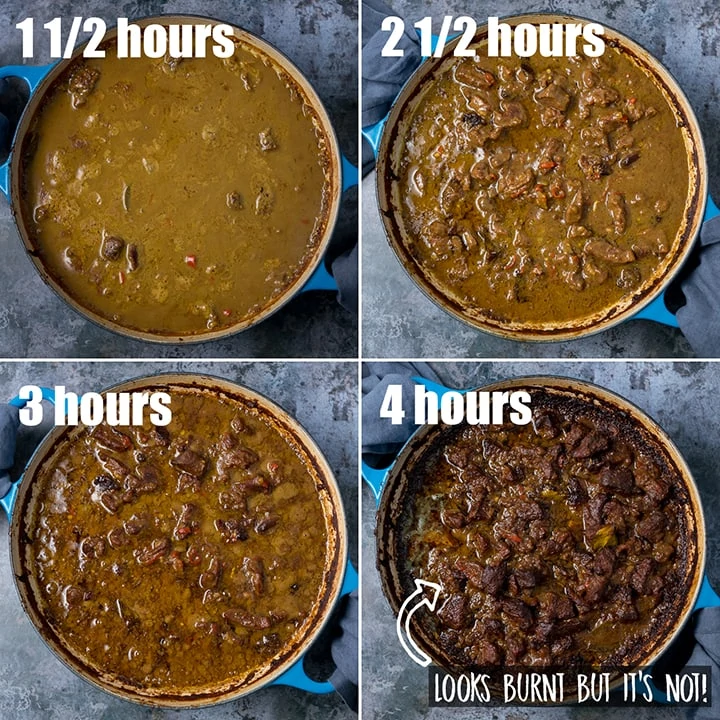
As more and more oil separates, and the rest of the sauce starts to disappear, that remaining oil will actually be crisping and frying the meat. So you’ll be left with very dark, caramelized meat that has been infused with bags of flavour.
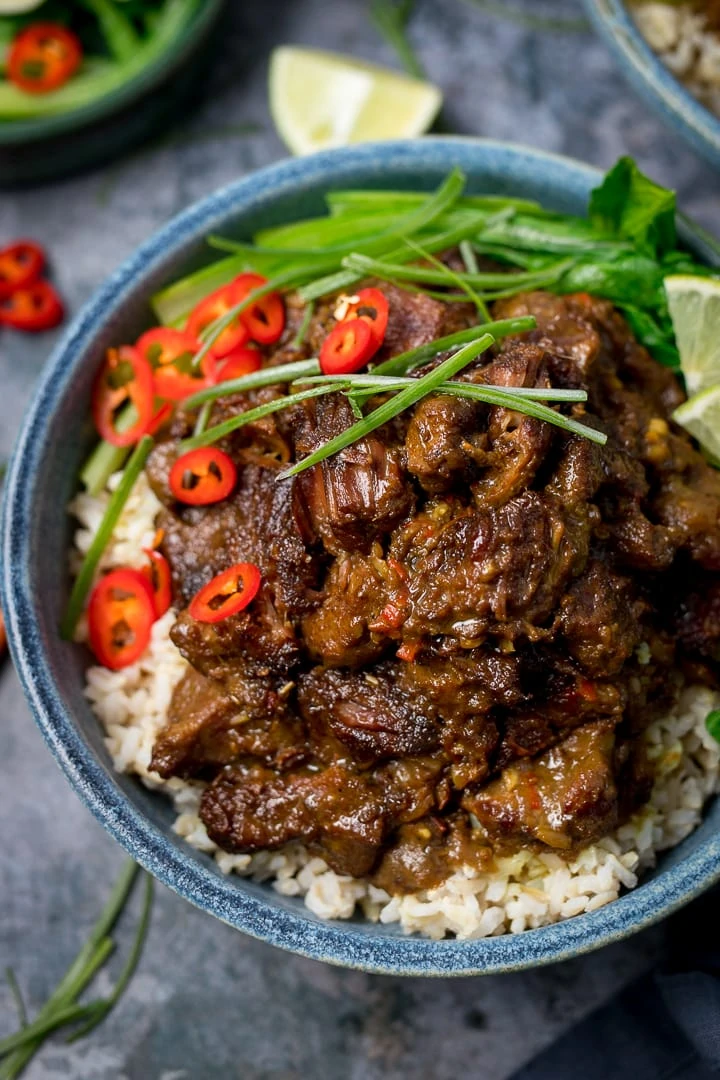
Pro Tip: It’s very important to keep a close eye on things during the last 30 mins or so – to ensure the meat doesn’t stick to the pan or burn. And don’t worry, any remaining oil can be poured off and discarded.
Like your rendang a little saucier?
Simply reduce the cooking time by 30-60 minutes, and be sure to drain that excess oil off.
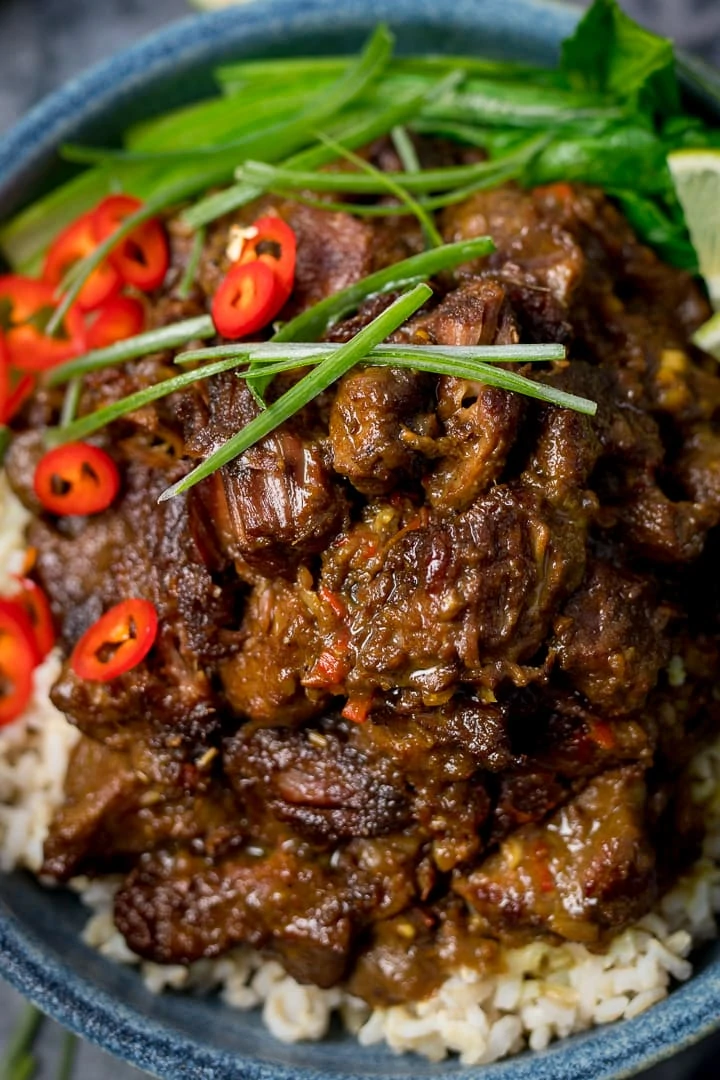
Source: https://www.kitchensanctuary.com








